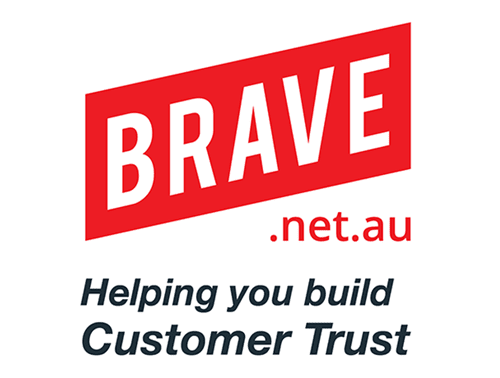In a rapidly evolving world, understanding user behaviour has become increasingly essential, particularly during times of uncertainty. This article provides a comprehensive definition of user behavior and identifies the key factors that influence it.
It examines how periods of unpredictability can drive shifts in online activity, spending habits, and priorities, ultimately affecting decision-making processes. The discussion will look at why these changes are happening and give advice on how businesses can change to meet their customers’ changing needs.
We invite you to engage with us as we navigate this complex landscape.

What Is User Behaviour?
Studying user behaviour involves observing how people make choices while shopping online. This includes their actions, preferences, and emotions in reaction to various stimuli. Users’ behavior is analyzed to understand their decision-making process and improve the online shopping experience.Understanding user behaviour is vital for businesses, as it offers insights into consumer behaviour patterns that enable companies to customise their marketing strategies effectively.
This discipline evaluates numerous factors, including market dynamics, emotional intelligence, and trust signals, all of which play a significant role in influencing purchasing decisions and brand loyalty within the digital landscape.
As the online marketplace continues to evolve, gaining a comprehensive understanding of user behaviour is essential for promoting user engagement and improving the overall user experience.
1. Definition of User Behaviour
User behaviour encompasses the patterns and actions exhibited by individuals in their interactions with digital platforms, particularly concerning online shopping and brand engagement.
Understanding these behaviours is essential for businesses seeking to customise their marketing strategies to enhance the customer experience. By analysing how potential buyers navigate websites, engage with content, and respond to promotional tactics, companies can identify significant purchasing patterns that influence sales outcomes.
As digital engagement continues to expand, shifts in consumer behaviour reveal not only preferences but also the emotional triggers that drive decision-making. The rise of mobile commerce, personalised advertising, and social media interactions plays a critical role in shaping these trends, making it imperative for brands to remain attuned to the evolving landscape of online shopping.
2. Factors That Influence User Behaviour
Several key factors influence user behaviour, including emotional responses to marketing stimuli, trust attributes associated with brands, and the overall user experience during online interactions.
Psychological elements, such as risk perception, significantly shape how users relate to products and services, ultimately impacting their purchasing decisions. Additionally, factors such as demographic shifts—including age and cultural background—further complicate these interactions, contributing to varying levels of brand loyalty among consumers. Socio-economic conditions also play a crucial role, as individuals from different financial backgrounds may approach information seeking and consumption in distinct ways.
Understanding these dynamics is essential for brands aiming to engage their target audiences effectively and meaningfully.
How Does User Behaviour Change During Times of Uncertainty?
During periods of uncertainty, such as an economic crisis, user behaviour experiences significant transformations influenced by heightened anxiety levels, changing purchasing patterns, and modified decision-making processes.
Individuals tend to display increased caution and risk perception regarding their spending, which often results in a surge in online activity as they seek information and reassurance from online communities and reputable brands.
These behavioural shifts can manifest in numerous ways, including alterations in product preferences and a heightened reliance on communication strategies that emphasise safety measures and brand trust.
Recognising and understanding these shifts is crucial for businesses to effectively adapt their marketing strategies.
1. Increase in Online Activity
One of the primary changes in user behaviour during periods of uncertainty is a significant increase in online activity as individuals increasingly turn to digital platforms for shopping, information, and social interactions.
This shift signifies a broader trend in which consumers are relying more on the convenience and accessibility of e-commerce and online communities. As individuals engage with brands through social media, businesses are presented with an opportunity to enhance user retention by cultivating connections and trust within a virtual environment.
The ongoing digital transformation necessitates that companies adapt their strategies accordingly, utilising meaningful user engagement metrics to monitor interactions and customise experiences. By harnessing data derived from these interactions, brands can develop personalised marketing campaigns, thereby influencing purchasing behaviours and fostering long-term relationships with their customers.
2. Change in Spending Habits
.jpg_01.jpeg)
Economic crises frequently result in a significant transformation of consumer spending habits, with individuals often prioritising essential goods and services over discretionary expenditures.
This shift typically manifests as a notable decline in purchases categorised as non-essential, such as luxury items and entertainment experiences. During periods of uncertainty, consumers generally seek security in their expenditures, gravitating towards brands that are perceived as reliable and trustworthy.
The concept of resilience emerges as a critical theme in these contexts; companies that demonstrate adaptability—whether through competitive pricing strategies or innovative product offerings—can cultivate loyalty among a cautious customer base.
Consequently, the evolving landscape underscores the importance of understanding the psychological factors influencing these purchasing patterns, as well as the necessity for businesses to respond effectively to shifting brand perceptions.
3. Shift in Priorities
In times of uncertainty, individuals often experience a significant shift in priorities, placing greater emphasis on health concerns and safety measures when making purchasing decisions.
As consumers navigate these emerging challenges, their expectations of brands fundamentally change, necessitating a reassessment of how companies communicate their values and offerings. This transformation highlights the importance of adopting a more empathetic tone in brand messaging, which reinforces trust and reliability.
Employing marketing channels that prioritise transparency and authenticity has become essential, allowing businesses to establish an emotional connection with their audience. It is imperative for organisations to not only adapt to these evolving consumer preferences but also to ensure that their strategies align with the profound concerns of their clientele, thereby fostering a sense of safety and assurance in their choices.
4. Impact on Decision Making
User behaviour during periods of uncertainty significantly influences decision-making processes, wherein increased risk perception prompts individuals to seek additional information before making purchasing commitments.
In this context, businesses stand to benefit greatly by utilising data analysis and sentiment analysis to interpret these evolving patterns. By analysing extensive datasets, companies can identify emerging trends, consumer sentiments, and the various motivations that drive user intent.
This approach not only assists in navigating information overload but also enables organisations to tailor their strategies effectively, ensuring alignment with their target audience.
Understanding these dynamics is vital, as it allows businesses to adapt swiftly to shifting moods and anxieties, thereby aligning their offerings with the values that consumers prioritise during challenging times.
What Are the Reasons for These Changes in User Behaviour?
The changes in user behaviour during periods of uncertainty can be attributed to several key factors, including heightened anxiety levels, economic instability, and modifications in daily routines that significantly influence consumer sentiment and priorities.
1. Fear and Anxiety
Fear and anxiety significantly influence user behaviour, often leading individuals to adopt more cautious purchasing decisions in response to external stressors.
Understanding this psychological impact is essential for businesses, as it enables the development of marketing strategies that align with consumer sentiments. When faced with uncertainty, consumers frequently seek reassurance through emotional coping mechanisms, such as gravitating towards trusted brands or seeking out information that alleviates their concerns.
Companies that exhibit emotional intelligence in their communications—by acknowledging customer fears and providing clear, honest messaging—can cultivate a sense of security and connection with their audience. By employing empathetic communication strategies, businesses can effectively address these emotional responses, thereby enhancing brand loyalty and encouraging more confident purchasing decisions, even in challenging circumstances.
2. Economic Instability
.jpg_10.jpeg)
Economic instability can result in significant changes in user behaviour, as individuals reassess their financial priorities, which often impacts their purchasing patterns and brand loyalty.
During such periods, shifts in market dynamics become apparent, with consumers exhibiting increased prudence in their spending habits. This reevaluation necessitates that businesses remain vigilant and adaptable, modifying their strategies to better align with evolving consumer preferences.
Organisations that can anticipate these behavioural changes will be in a stronger position to cater to a more budget-conscious audience, ultimately promoting resilience.
Understanding these economic indicators is essential for developing effective marketing strategies and maintaining a competitive advantage. Recognising the interplay between financial trends and consumer sentiment can drive innovation and foster long-term relationships.
3. Changes in Daily Routine
Changes in daily routines, including the trends towards remote work and lifestyle adjustments, significantly influence user behaviour, resulting in modified spending habits and product preferences.
As these shifts become increasingly evident, individuals may place a higher value on convenience, digital solutions, and experiences rather than traditional products.
It is imperative for businesses to recognise that adaptability in marketing strategies is crucial to align with this transformation. For instance, companies should concentrate on enhancing the user journey by providing personalised experiences and facilitating seamless online interactions.
By comprehensively understanding the evolving preferences and pain points of their audience, brands can develop targeted messaging that resonates with consumers, ultimately fostering loyalty and driving sales in a highly competitive market.
How Can Businesses Adapt to These Changes in User Behaviour?
Businesses must implement adaptive strategies to respond effectively to changes in user behaviour. By leveraging customer insights, organisations can tailor their marketing strategies to align with evolving consumer sentiment.
1. Understanding the Needs of Customers
A comprehensive understanding of customer needs is essential for businesses aiming to adapt to changing user behaviour, as it informs product development and marketing strategies.
Implementing effective methods for gathering customer insights, such as feedback loops and sentiment analysis, can significantly enhance this understanding. By actively seeking consumer opinions and perceptions regarding products and services, organisations can acquire valuable information that reflects user preferences. This knowledge not only aids in refining offerings but also fosters brand trust, as customers feel valued when their voices are acknowledged.
Furthermore, analysing sentiment trends enables businesses to make informed decisions, allowing them to adjust their strategies to align with evolving customer desires, thereby promoting loyalty and satisfaction.
2. Adapting Marketing Strategies
Adapting marketing strategies in response to evolving user behaviour is essential for maintaining consumer trust and engagement during uncertain times.
This adaptability is particularly important as consumers increasingly seek reassurance and relevance from the brands with which they interact. Implementing personalised communication can significantly enhance the consumer experience, enabling brands to align their messages with individual preferences and needs.
Incorporating value perception strategies is also vital, as it highlights the advantages of a product or service. This approach not only provides support during crises but also fosters a lasting relationship within the broader context of digital transformation.
By implementing these strategies, businesses can effectively navigate challenges, ensuring that their marketing remains impactful and resonates well with their target audience.
3. Providing Support and Flexibility
.jpg_11.jpeg)
Providing support and flexibility to customers during uncertain times can enhance user trust and loyalty, significantly influencing their overall perception of the brand.
When a brand prioritises responsive customer service, it not only addresses immediate concerns but also cultivates a sense of community and belonging among its users. This approach fosters a strong relationship built on open communication and genuine care, which can substantially improve customer retention rates.
Implementing flexible return policies demonstrates the brand’s commitment to customer satisfaction, instilling a sense of security in their purchasing decisions. By establishing these trust factors, a brand positions itself as a reliable partner, encouraging consumers to engage more deeply and consistently over time.
Frequently Asked Questions
What are some examples of changes in user behaviour during times of uncertainty?
Examples of changes in user behaviour during times of uncertainty may include increased online shopping, stockpiling of essential items, and reduced spending on non-essential goods and services.
How does uncertainty affect consumer decision-making?
Uncertainty can cause consumers to prioritise their needs and make more cautious decisions when it comes to spending money. They may also delay or avoid making major purchases during times of uncertainty.
What are some factors that can influence changes in user behaviour during times of uncertainty?
Factors that can influence changes in user behaviour during times of uncertainty include the severity and duration of the uncertainty, the availability of information, and the level of trust in institutions and authorities.
How can understanding changes in user behaviour during times of uncertainty benefit businesses?
Understanding changes in user behaviour during times of uncertainty can benefit businesses by helping them anticipate and adapt to the needs and preferences of their target audience. This can lead to improved customer satisfaction and increased sales.
What are some tips for businesses to navigate changes in user behaviour during times of uncertainty?
Some tips for businesses to navigate changes in user behaviour during times of uncertainty include staying informed about current events and consumer trends, communicating transparently with customers, and being flexible and adaptable in their approach to marketing and sales strategies.
How can businesses prepare for potential changes in user behaviour during times of uncertainty?
Businesses can prepare for potential changes in user behaviour during times of uncertainty by conducting market research, diversifying their products or services, and creating contingency plans to address potential shifts in consumer demand.






